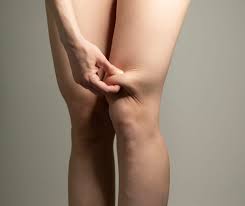Managing Temperature Sensitivity After Liposuction: Causes, Symptoms, and Solutions
Key Takeaways
-
Post-liposuction patients commonly report feelings of temperature change. This is frequently due to nerve irritation or injury, so understanding this can help you set realistic expectations and recovery timelines.
-
Both inflammation and dehydration can increase sensitivity to temperature extremes. This is one reason underlining the importance of adhering to post-op care instructions to help control swelling and maintain adequate hydration.
-
Identifying signs such as the feeling of burning and increased sensitivity to hot and cold is essential to better manage and heal from these symptoms.
-
Cold compresses can be used to reduce swelling and are most effective within the first 3 days after injury. Choose appropriate clothing and hydrate to support your body’s healing efforts.
-
Effective communication with healthcare providers and attending follow-up appointments are essential for monitoring recovery progress and addressing any concerns promptly.
-
Preparing before surgery by choosing an experienced surgeon and understanding the recovery timeline can prevent complications and set realistic expectations for the healing process.
Come to find out, 35% of liposuction patients report some form of temperature sensitivity! That’s huge, and it can really surprise a lot of people. Coping with these sensations requires real-world tactics paired with honest dialogue with medical professionals.
Once you understand what causes and what symptoms, you can better take control. Imagine it like a collaborative trip with your body on the highway to healing. Smart post-op care goes beyond just doing what you’re told to do.
It’s all about establishing trust with your body and your medical professionals. Approach the journey with optimism, recognizing that every step takes you closer to recovery. You can do this, and all of your concern truly helps.
What Is Temperature Sensitivity?
Temperature sensitivity is a frustrating and sometimes confusing side effect following surgeries such as liposuction surgery. It represents an abnormal response to changes in temperature. Now picture a future in which your body is more sensitive to heat and cold.
Imagine if those nerve endings, delicate couriers in your dermis, were to be jostled or disrupted during the liposuction procedure. They might even send signals that change how your skin feels, potentially making it more sensitive to heat or cold.
When you undergo liposuction, the procedure can also activate nerve endings in the area, heightening their sensitivity. This can lead to sensations of tingling or burning. It’s not unusual, and many people who have had liposuction experience this.
Additionally, the inflammation that occurs after surgery is a major contributor to these sensations. When the body is inflamed, it may struggle to regulate temperature as effectively as it normally would. Understanding this sensitivity as a universal experience among patients helps create the awareness that this is simply a normal part of the liposuction recovery process.
Causes of Temperature Sensitivity
The underlying cause of temperature sensitivity post-liposuction is usually due to nerve irritation or injury. During the procedure itself, the nerves in the area can become irritated, and this may temporarily change the way you feel things.
Because of this, liposuction can be more traumatic to your tissues than other methods. This trauma can also change your skin and leave it more sensitive to temperature changes. Swelling and inflammation usually are at their worst by the third day.
Afterwards, they start to wear off but can still seriously inhibit the body’s ability to control its own temperature. These symptoms could likely be exacerbated by dehydration since the body requires plenty of hydration in order to heal and function properly.
Symptoms to Recognize
Afterwards, you may experience problems such as burning or tingling sensations where the liposuction was done. Others even experience heightened sensitivity to cold or heat.
These feelings can be many things, such as high, low, strong, or weak, and may fluctuate or even ebb and flow. Monitoring these symptoms is paramount. Best of all, it assists in cracking down on them appropriately.
Common Post-Liposuction Issues
Apart from the newly discovered temperature sensitivity, there are a number of common aftereffects following liposuction, including excessive swelling and bruising. Swelling typically peaks around the third day, then starts to go down.
Bruising usually disappears in two to three weeks. Don’t worry—by the end of the second week, discomfort is almost always a thing of the past.
These physical discomforts also have the potential to disrupt emotional well-being, and knowing what’s normal while healing can ease anxieties. Effective treatment is key to preventing complications.
For example, warming the infiltration solution to 37° Centigrade is suggested to facilitate recovery.
Strategies for Managing Sensitivity
Managing the journey to recovery post-liposuction surgery means being mindful of the increased sensitivity to temperature and potential liposuction discomfort. Here are some effective strategies.
-
Follow post-operative instructions carefully for optimal healing.
-
Apply cold compresses carefully and only to decrease swelling and alleviate pain.
-
Wear appropriate clothing to accommodate sensitivity to temperature changes.
-
Stay hydrated to support overall recovery and mitigate symptoms.
1. Follow Post-Operative Instructions
Following your surgeon’s instructions is key to reducing the risk of complications. These step-by-step directions are your playbook for an easy and fast recovery process. If you are confused about something you should be the first one to raise your hand.
That creates a deeper healing and a faster healing journey. Compression garments are the unsung heroes of this battle, cutting down swelling and adding support. They are the best pedal foot cushions, like a soft little hug for your foot that cradles it back into alignment.
2. Use Cold Compresses Carefully
Cold compresses are your best friend when it comes to minimizing swelling and pain. Use them on the areas that are affected, and pay attention to when you use them. Too short, and you could be exposing your skin to damage or encouraging sensitivity.
Switching between a cold and warm compress can work miracles with blood flow. Be sure to monitor how your skin is responding to make sure it’s doing more good than harm.
3. Wear Appropriate Clothing
Comfort is definitely king when it comes to clothing after surgery. Breathable fabrics that fit loosely are best. They also keep you from getting chafed around your surgical sites and getting your feet used to the heat.
When it comes to staying comfortable, layering is a smart, strategic move. Steer clear of constricting clothing that may increase swelling or pain. We want fabrics that are soft and provide a warm and comforting feel against delicate skin.
4. Stay Hydrated
Proper hydration is key as well, as it helps remove toxins and reduce swelling in the area, aiding the healing process. Staying hydrated, drinking lots of water, is essential, as is reducing your caffeine and alcohol intake.
Proper hydration is key to flushing out toxins and building healthy blood circulation. If you’re looking to stay hydrated, try keeping track of how much fluid you’re consuming.
5. Maintain a Healthy Diet
Support healing with a diet rich in:
-
Vitamins and minerals for tissue repair.
-
Lean proteins for muscle recovery.
-
Fruits and vegetables for anti-inflammatory properties.
Avoid processed foods high in sugar and salt.
Importance of Proper Post-Operative Care
Proper post-operative care is essential to achieving the best possible outcome after liposuction. It’s not just about the surgery though; it’s a critical part of their healing journey. By prioritizing high-quality care, you can avoid complications and ensure that your body heals without interruption.
For example, resting when your doc says you should and not overdoing it when your doc clears you for activity can decrease swelling and help you heal faster. Surprisingly, a solid maintenance routine equals being happy with your new body shape years from now. When post-operative care is prioritized, you heal more quickly and comfortably, allowing you to enjoy your results to the fullest.
Communicate with Healthcare Providers
Being open and honest with your healthcare team is very important. If you see something that doesn’t seem right, speak up immediately. Reporting the development of chronic pain or changes in sensation of the skin is really important.
On that note, maintaining a symptom journal is incredibly useful. Writing down what you’re experiencing and when can help guide conversations with your doctor during routine check-ups. If you ever feel uncertain that your recovery is progressing as it should, going to see a medical professional is always the best decision.
That way, you’ll be able to address problems as they arise and get back on course.
Monitor Your Recovery Progress
Keeping an eye on how you’re healing is another important step. Track your recovery milestones and note any changes in symptoms. Writing down pain levels, swelling, and other sensations helps identify patterns.
Regular self-assessments allow you to see how you’re improving. It also means you can address any problems early on. By monitoring your progress, you ensure that your recovery stays on course, which is key for effective management.
Attend Follow-Up Appointments
Follow-up appointments are not an optional luxury. These visits also provide an important opportunity for your healthcare provider to evaluate how you’re doing. They’ll be able to talk to you about any concerns or questions you may have.
By writing down your questions for your surgeon prior to each visit, you can help ensure that these appointments are as productive as possible. Follow-ups are also really important for monitoring how you are healing and making sure all is going well.
These people assist in safeguarding both the best possible outcome and your general satisfaction with the process.

Preventing Temperature Sensitivity
How to deal with temperature sensitivity post liposuction
Navigating temperature sensitivity after liposuction is an easy, intentional process. Here’s a handy list of preventive measures to help minimize discomfort:
-
Be proactive in preparing for surgery by going over risks with your surgeon.
-
Select a skilled and experienced surgeon to ensure the highest quality of technique, attention, and care to the procedure.
-
Know the recovery timeline so you can have realistic expectations and not create undue pressure on yourself.
Prepare Before Surgery
Talking to your surgeon beforehand about any underlying conditions you may have is an obvious and wise first step. Such conversations go a long way in personalizing the procedure to your individual needs and improving your recovery time.
Making sure the recovery space at home is a healing environment is another important move. In other words, think comfy cushions, convenient access to daily must-haves, and possibly a book or two you love. It’s about creating a small sanctuary.
The week leading up to surgery, try to collect any supplies you’ll need ahead of time, including medications and compression garments. They make a physically painful time much easier on patients, so that it’s not such a scramble after surgery.
Mental preparation is just as important. Having a good idea of what to expect will help reduce anxiety and help make the recovery process a little less overwhelming.
Choose an Experienced Surgeon
When it comes to having surgery, selecting the appropriate surgeon can truly make all the difference. When it comes to cosmetic surgery, a well-trained, experienced cosmetic surgeon has the skills and expertise to reduce risks and produce optimal recovery results.
It’s more than credentials, though verifying those is important. Patient testimonials also provide an inside look at what to expect from other patients and help inform your decision.
It’s important to feel comfortable with and confident in your surgeon’s skills. It comes down to trust and the peace of mind that comes from knowing you’re in good hands.
Understand the Recovery Timeline
Knowing what to expect during your recovery from liposuction is an important first step. There are even tips for what to expect and milestones to look forward to as you heal.
Understanding these allows you to temper expectations and help avoid panic-inducing scenarios. It’s essential to be patient with your body while it heals.
That patience creates a slow, subtle recalibration to new shapes of things over many years. Care instructions are your treasure map. Continuing to follow them for the full duration of the recovery period is what will lead to optimal outcomes.
Conclusion
Caring for new temperature sensitivity post-liposuction is a process that involves using extra care and caution. By being informed and taking precautionary measures, you can be safer and more confident. Don’t ignore your body’s warning signs. Protect your skin by wearing loose, soft clothing and staying in regulated, climate-controlled environments. Your body’s post-recovery journey is personal and requires time and care. Never hesitate to contact your healthcare provider if something just doesn’t seem right. Our wisdom can keep you armed and focused, and their encouragement can go a long way.
While this process can be intimidating, keep in mind that every step you take towards feeling at ease is an accomplishment. When you reconfigure to what your body is asking for, you give way to healing. Remember to make your health a priority, and don’t forget to acknowledge your achievements. You also have to do it for yourself; you deserve to feel your best. Begin today by using these strategies and you’ll be able to feel the difference in no time. So, let’s take this journey together and work to find the trail that leads all of us to ease and healing.
Frequently Asked Questions
What is temperature sensitivity after liposuction?
Temperature sensitivity refers to when the body has an abnormal reaction to changes in temperature. Immediately after the liposuction procedure, the nerves around the affected areas can be extremely sensitive, leading to discomfort and pain when experiencing hot or cold temperatures.
How can I manage temperature sensitivity post-liposuction?
To help with liposuction discomfort, wear loose-fitting clothes and avoid hot and cold temperatures. Every time we face a stressor and push through it, our body begins to adapt. Drink plenty of fluids and eat a variety of foods to aid in liposuction recovery.
Why is post-operative care crucial for temperature sensitivity?
Good liposuction care reduces the risk of complications and speeds recovery. By following your surgeon’s post-op instructions for pain management, you can avoid liposuction discomfort and enjoy a more comfortable recovery.
Can temperature sensitivity be prevented after liposuction?
Complications from liposuction surgery are not completely avoidable, but you can reduce the risk by adhering to pre-and post-surgical directives, including proper liposuction care and managing discomfort in the affected areas.
Are there any long-term effects of temperature sensitivity?
The majority of cases are acute, but if sensitivity or unusual skin sensations persist for more than six months, consult your surgeon for potential liposuction care and treatment options.
What should I avoid to reduce temperature sensitivity?
Avoiding hot baths, saunas, or ice packs is essential after liposuction surgery, as these environmental factors can worsen skin sensations and discomfort. Soothing activities promote a smooth recovery and ease during the healing process.
When should I contact my doctor about temperature sensitivity?
If sensitivity increases or is linked to significant pain, swelling, or unusual skin sensations, it may indicate a need for medical intervention and should prompt you to contact your physician.






